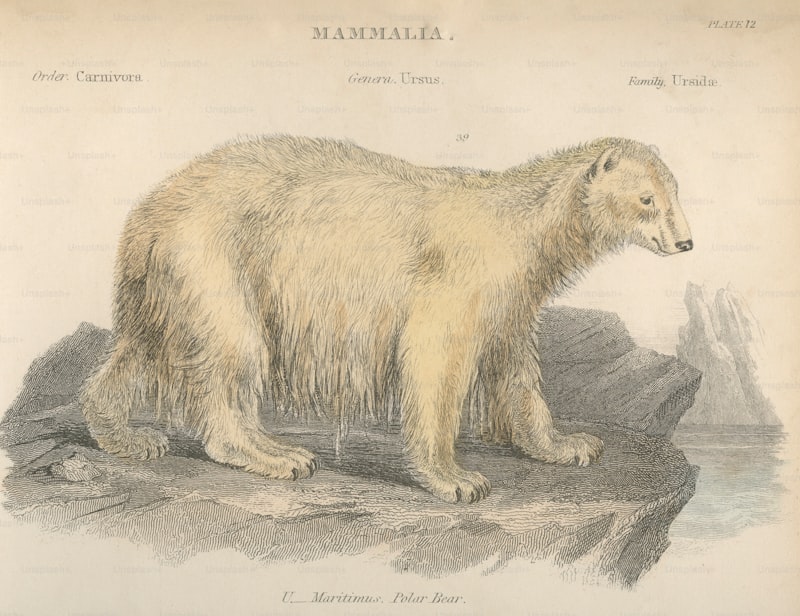
One of the key adaptations seen in herbivorous mammals is their dentition. Teeth are crucial for processing plant material efficiently. For instance, ruminants like cows and deer have complex, multi-chambered stomachs that enable them to regurgitate and re-chew their food, maximizing the extraction of nutrients from tough cellulose fibers. This process, known as rumination, exemplifies their digestive specialization.
Furthermore, herbivorous mammals often exhibit elongated digestive tracts. This anatomical feature allows for prolonged digestion and absorption of nutrients from plant matter. Animals such as horses and elephants rely on extensive hindgut fermentation to break down cellulose, facilitated by symbiotic bacteria in their intestines.
In addition to structural adaptations, herbivores have behavioral strategies to optimize their diet. Many species exhibit selective feeding habits, choosing specific plants based on nutrient content or availability. Giraffes, for example, use their long necks to reach high branches where tender leaves are abundant, while pandas have evolved a pseudo-thumb to grasp bamboo stalks effectively.
Evolution has also shaped herbivorous mammals’ metabolic processes. Some, like koalas subsisting on eucalyptus leaves, have highly specialized detoxification mechanisms to cope with plant toxins. Others, such as rabbits, have a rapid digestive turnover rate to maximize nutrient uptake from their fibrous diets.
Chew on This: How Herbivorous Mammals Adapt Their Diets to Survive
Ever wondered how herbivorous mammals manage to thrive on diets composed solely of plants? It’s a remarkable feat of adaptation that showcases nature’s ingenuity at its finest. These animals, ranging from elephants to giraffes and everything in between, have evolved unique digestive systems designed to extract maximum nutrition from plants.
One key adaptation lies in their teeth. Herbivores typically have specialized molars and premolars that are perfect for grinding and crushing tough plant material. Take the elephant, for instance, with its massive molars that continuously grow throughout its lifetime. These teeth are essential for breaking down fibrous vegetation into smaller, digestible pieces.
But teeth are just the beginning. Herbivorous mammals also rely on fermentation. Many species, like cows and deer, have complex stomachs with multiple chambers that host specialized bacteria. These bacteria aid in breaking down cellulose, a tough plant fiber that is otherwise indigestible to most animals. This process releases essential nutrients that the mammals can then absorb.
Interestingly, herbivores have longer digestive tracts compared to carnivores. This anatomical feature allows for a slower digestion process, ensuring thorough extraction of nutrients from plant matter. It’s like a well-timed orchestra, where each part of the digestive system plays its crucial role in turning plants into sustenance.
Moreover, these mammals have developed behaviors that complement their digestive adaptations. Grazing, for example, allows them to continuously nibble on grasses and herbs throughout the day, maintaining a steady intake of food that matches their digestive capabilities.
In essence, the ability of herbivorous mammals to adapt their diets is a testament to evolution’s power of refinement. From teeth to stomachs and feeding behaviors, every aspect is finely tuned to make the most of a plant-based diet. Next time you spot a grazing deer or an elephant munching on leaves, remember the intricate adaptations that allow them to thrive solely on plants.
Inside the Leafy Greens: Evolutionary Secrets of Herbivorous Mammal Diets
Diving into the world of herbivorous mammal diets reveals a fascinating evolutionary journey shaped by leafy greens. These mammals, ranging from elephants to giraffes and koalas, have evolved unique digestive systems to efficiently break down cellulose-rich plant material. How did this adaptation come about, and what secrets does it hold?
Herbivorous mammals, unlike carnivores, rely primarily on plant-based diets. Their digestive systems have adapted over millennia to handle the tough cell walls of plants. For instance, elephants possess large, complex stomachs that ferment vegetation, aided by bacteria that break down cellulose into digestible compounds. This intricate process allows them to extract maximum nutrition from the fibrous plants they consume.
Giraffes, with their long necks and prehensile tongues, specialize in browsing on tall trees and shrubs. Their digestive system efficiently processes leaves, extracting essential nutrients while minimizing water loss—a crucial adaptation for survival in arid habitats.
In contrast, the koala’s diet is highly specialized, consisting almost exclusively of eucalyptus leaves. Despite their toxicity and low nutritional value, koalas have adapted to digesting these leaves through a slow digestive process that allows them to detoxify the plant’s compounds gradually.
The evolutionary secrets lie in these adaptations: specialized teeth for grinding tough plant material, elongated digestive tracts for prolonged fermentation, and symbiotic relationships with gut microbes that aid in digestion. These adaptations not only ensure survival but also highlight the complexity of nature’s evolutionary arms race between plants and herbivores.
Exploring the diets of herbivorous mammals unveils a world where every evolutionary trait—from jaw structure to microbial symbiosis—plays a crucial role in their ecological niche. Understanding these secrets not only enriches our knowledge of natural history but also underscores the delicate balance between herbivores and their plant-based food sources.
This article delves into the fascinating adaptations and evolutionary strategies that herbivorous mammals have developed to thrive on leafy greens, emphasizing their unique dietary requirements and ecological roles.
From Grasslands to Treetops: The Varied Dietary Strategies of Herbivorous Mammals
In the sprawling grasslands of Africa, herbivores like zebras, antelopes, and giraffes have adapted to grazing on nutrient-rich grasses and low-lying shrubs. Their elongated necks, like those of giraffes, allow them to reach high into the acacia trees, accessing foliage that other animals cannot reach. This browsing behavior not only sustains their energy needs but also shapes the savannah ecosystem by pruning vegetation and stimulating new growth.
Meanwhile, in dense rainforests teeming with life, herbivorous mammals face different challenges. Species such as howler monkeys and orangutans have specialized diets rich in fruits, leaves, and occasionally insects. Their nimble movements and dexterous hands enable them to navigate the dense foliage, plucking fruits and tender leaves with precision. These animals play a crucial role in dispersing seeds across the forest floor, contributing to the diversity and resilience of the ecosystem.
Across these diverse landscapes, herbivorous mammals exhibit remarkable adaptations that highlight nature’s ingenuity. From the powerful jaws of hippos munching on aquatic plants to the complex stomachs of ruminants like cows and deer, capable of digesting tough plant materials, each adaptation underscores the evolutionary arms race between plants and herbivores.
Understanding these dietary strategies not only deepens our appreciation for the natural world but also emphasizes the interconnectedness of ecosystems. By maintaining healthy populations of herbivores, we ensure the balance of plant communities and the survival of countless other species dependent on them.
Nature’s Vegans: Exploring the Complexities of Herbivorous Mammal Diets

Have you ever wondered how herbivorous mammals sustain themselves on plant-based diets in the wild? These creatures, often referred to as nature’s vegans, showcase remarkable adaptations that allow them to thrive without consuming meat. From elephants to gorillas, herbivores have evolved specialized digestive systems capable of breaking down tough cellulose found in plants.
Take the elephant, for example. These majestic giants spend most of their day foraging for grasses, fruits, and leaves. Their large molars are designed to grind and chew coarse vegetation efficiently. Elephants also rely on fermentation in their hindgut, where bacteria break down cellulose into digestible nutrients—a process essential for their survival in diverse habitats ranging from savannas to forests.
Similarly, gorillas, our closest relatives in the animal kingdom, primarily consume leaves, stems, and fruits. Their robust teeth and powerful jaws enable them to process fibrous plants effectively. Gorillas have developed large, complex stomachs with multiple chambers to maximize the extraction of nutrients from their plant-based diet. This intricate digestive system reflects millions of years of adaptation to their ecological niche in African rainforests.
Beyond the physical adaptations, herbivorous mammals demonstrate fascinating behavioral strategies to ensure nutritional balance. Many species exhibit selective feeding habits, choosing plants rich in specific nutrients crucial for their health. For instance, some herbivores migrate seasonally to access different types of vegetation, while others form social groups to share knowledge about food sources.
Understanding these complexities not only sheds light on the diversity of life but also underscores the importance of conservation efforts to protect habitats and ensure the survival of herbivorous species worldwide. As we continue to study and admire nature’s vegans, we gain deeper insights into the delicate balance that sustains our planet’s ecosystems.
Frequently Asked Questions
How do herbivorous mammals digest plant material?
Learn how herbivorous mammals digest plant material efficiently through specialized digestive systems that include fermentation chambers and symbiotic bacteria, enabling them to break down cellulose and extract nutrients.
What are herbivorous mammals and what do they eat?
Learn about herbivorous mammals and their dietary habits. Discover what these animals eat, which primarily includes plants, fruits, vegetables, and occasionally nuts or seeds. Herbivorous mammals play a crucial role in ecosystems by consuming plant material as their main food source.
How do herbivorous mammals obtain essential nutrients from plants?
Herbivorous mammals obtain essential nutrients from plants through specialized digestive systems that break down cellulose and extract nutrients such as carbohydrates, proteins, fats, vitamins, and minerals. These animals rely on fermentation and symbiotic relationships with gut bacteria to digest plant material efficiently.
Why do herbivorous mammals have different feeding strategies and diets?
Herbivorous mammals exhibit diverse feeding strategies and diets to efficiently extract nutrients from plant material. These adaptations are influenced by factors such as habitat, available plant species, and body size. Variations in teeth and digestive systems enable them to process fibrous plants effectively, ensuring they meet their nutritional needs in various environments.
What are some examples of specialized dietary adaptations in herbivorous mammals?
Examples of specialized dietary adaptations in herbivorous mammals include the multi-chambered stomach of ruminants like cows for fermenting plant material, the enlarged cecum in rabbits and rodents for digesting cellulose, and the dental structure of elephants with elongated molars for grinding tough plant matter.


